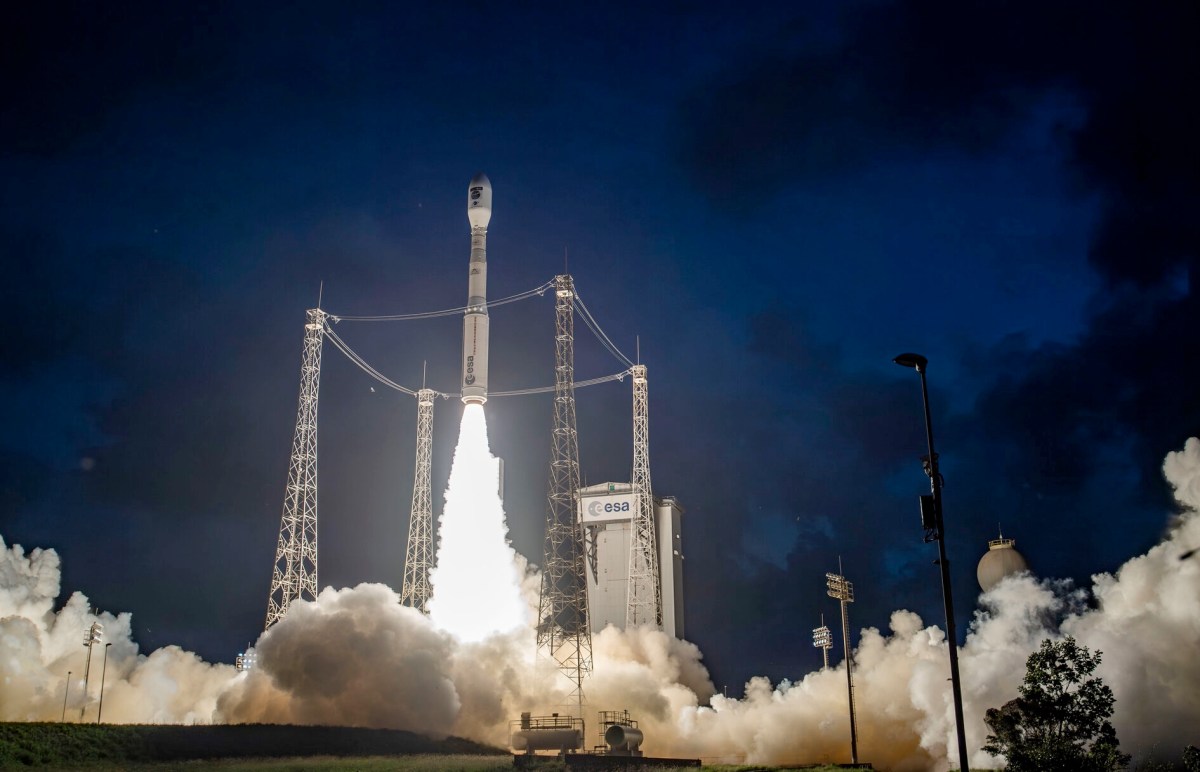WASHINGTON — A Vega C successfully launched an Earth observation satellite Dec. 5 in the rocket’s first flight since a failure nearly two years ago.
The Vega C lifted off from the European spaceport at Kourou, French Guiana, at 4:20 p.m. Eastern. The launch was previously scheduled for Dec. 4 but delayed a day because a problem with the mobile launch gantry at the pad.
The three solid-fuel lower stages of the Vega C performed as expected, followed by three burns by the liquid-propellant AVUM+ upper stage. That upper stage deployed its payload, the Sentinel-1C satellite, about one hour and 45 minutes after liftoff.
The launch was the first for the Vega C since a December 2022 launch failure on the rocket’s second flight that destroyed two Pléiades Neo imaging satellites. That failure was blamed on the nozzle on the Zefiro-40 motor in the rocket’s second stage. Avio, the prime contractor for the Vega C, first replaced the carbon-carbon material in the nozzle, but the nozzle failed in a June 2023 static-fire test, leading to a redesign of the nozzle itself.
The redesigned motor completed two static-fire tests in May and October, giving Avio, launch services company Arianespace and the European Space Agency confidence that the problem was corrected. The motor performed as expected on this flight.
The payload, Sentinel-1C, is a radar imaging satellite built by Thales Alenia Space for the Copernicus program of Earth observation missions run by ESA and the European Commission. It replaces the Sentinel-1B spacecraft that malfunctioned in orbit nearly three years ago. It joins the existing, but aging, Sentinel-1A satellite and includes new capabilities to monitor maritime traffic with an Automatic Identification System (AIS) receiver.
“One moment combined two great European achievements today: the third launch of a Sentinel-1 satellite and the third launch of Vega C, marking a triumphant return to form for both flagship European projects,” ESA Director General Josef Aschbacher said in a statement after the launch.
The Vega C return to flight was particularly significant since its earlier failure, coupled with the retirement of the Ariane 5 and delays in the introduction of the Ariane 6, led to what Aschbacher and others called a “launcher crisis” in Europe. That forced ESA and the EU to turn to SpaceX for Falcon 9 launches of key science and navigation spacecraft.
“Today’s launch marks a crucial step forward, reaffirming European independent access to space,” said Toni Tolker-Nielsen, ESA’s director of space transportation, in a post-launch statement. “With Vega C back in flight and the inaugural launch of Ariane 6 in July, we are in a great place going forward.”
Four Vega C launches are planned for 2025, which will be the last with Arianespace as the launch services provider for the rocket. It is transitioning that responsibility to Avio, which has already taken over sales and marketing of the rocket.
“We are once again proud to contribute to the European Copernicus program and more broadly to an independent access to space for Europe through our launchers,” Giulio Ranzo, chief executive of Avio, said in a statement. “With Vega C, we are ready to deliver our customers’ payloads to orbit with a scheduled increase in launch cadence for the upcoming years.”
With a mostly successful first launch of the Ariane 6 — a malfunction prevented the upper stage from performing a final deorbit burn — and the return to flight of Vega C, ESA and launch companies are now focusing on increasing flight rates. A second Ariane 6 was originally scheduled for late this year, but Arianespace announced a month ago that it would be delayed to mid-February.
The delay, Arianespace said at the time, would not affect the schedule of future launches, and company executives had previously projected six Ariane 6 launches in 2025. “Following this success and that of the inaugural flight of Ariane 6,” Stéphane Israël, chief executive of Arianespace, said after the Vega C launch, “Arianespace is preparing for a high level of activity in 2025.”
That high level of activity is a relative matter. By contrast, SpaceX has performed more than 120 launches of its Falcon 9 and Falcon Heavy launches so far this year.
